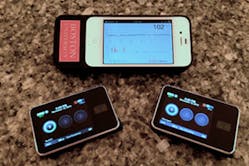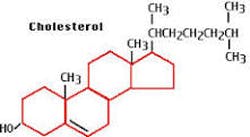By Maria Perno Goldie, RDH, MS
People, especially children, should consume soft drinks and other caffeinated beverages, such as coffee and energy drinks, with caution. What we are just learning is that they affect females and males differently. After reaching puberty, young boys and girls appear to process caffeine in different ways.1 Males experience greater heart-rate and blood-pressure changes than females.
Although the differences are small, even low doses of caffeine can have an influence on heart rate and blood pressure in children. The purpose of the study was to test the hypotheses that sex differences in cardiovascular responses to caffeine appear after puberty, and that cardiovascular responses to caffeine differ across the phases of the menstrual cycle. The study did find variations that showed that, in response to caffeine across the menstrual cycle in postpubertal girls, decreases in heart rate were greater in the midfollicular phase, and blood pressure increases were greater in the midluteal phase of the menstrual cycle.
Many experts, including the American Academy of Pediatrics, discourage caffeine consumption in children and teens because of cardiovascular concerns. Previous research has shown that caffeine increases blood pressure and decreases heart rate in kids and adults. To be safe, teens should not consume more than 100 milligrams of caffeine a day, or the amount in a cup of coffee.
In other news, safety concerns about the human papillomavirus (HPV) vaccination were put to rest. An analysis that included more than 500,000 women who received the HPV vaccination did not find an increased risk of venous thromboembolism (VTE), or blood clot.2 The conclusions of the study, which were consistent after adjustment for oral contraceptive use in girls, young women, and mid-adult women, did not provide support for an increased risk of VTE following quadrivalent HPV vaccination.
There is good news for diabetes patients. An artificial pancreas developed by researchers in Boston offers hopefulness to diabetes patients, as the device might be able to change the treatment of type 1 diabetes. The experimental device consists of an automated pump that releases the hormones insulin and glucagon and a glucose monitoring system controlled by an iPhone app. The conclusion of the study was, as compared with an insulin pump, a wearable, automated, bihormonal, bionic pancreas improved mean glycemic levels, with less frequent hypoglycemic episodes among both adults and adolescents with type 1 diabetes mellitus.3 The full text of the article is available online.
And lastly, a recent study found that a couple may have difficulty conceiving if both the man and woman have high cholesterol levels.4 The study also found that if only the woman has high cholesterol, the couple may still have difficulty conceiving, compared to a couple where both have normal cholesterol levels. The authors of the study suggest that cholesterol levels may impact fertility because the body uses the substance to regulate sex hormones such as testosterone and estrogen.
References
1. Temple JL, Ziegler AM, Graczyk A, et al. Cardiovascular Responses to Caffeine by Gender and Pubertal Stage. Published online June 16, 2014.
2. Scheller NM, Pasternak B, Svanström H, Hviid A. Quadrivalent Human Papillomavirus Vaccine and the Risk of Venous Thromboembolism. JAMA, 2014; 312 (2): 187 DOI: 10.1001/jama.2014.2198.
3. Russell SJ, El-Khatib FH, Sinha M, et al. Outpatient Glycemic Control with a Bionic Pancreas in Type 1 Diabetes. The New England Journal of Medicine. http://www.nejm.org/doi/pdf/10.1056/NEJMoa1314474.
4. Schisterman EF, Mumford SL, Browne RW, et al. Lipid Concentrations and Couple Fecundity: The LIFE Study. The Journal of Clinical Endocrinology & Metabolism, May 20, 2014. DOI: http://dx.doi.org/10.1210/jc.2013-3936.









